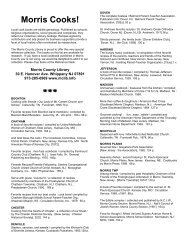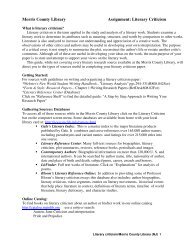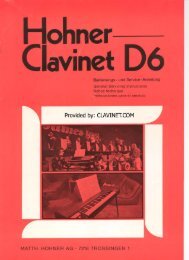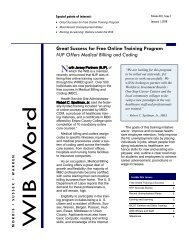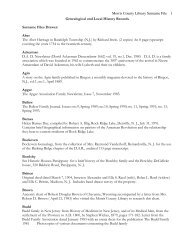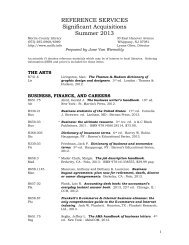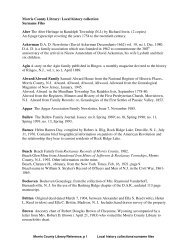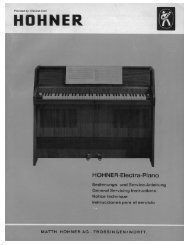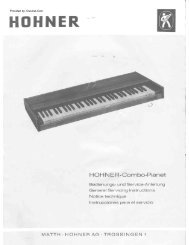You also want an ePaper? Increase the reach of your titles
YUMPU automatically turns print PDFs into web optimized ePapers that Google loves.
the same principles as when gathering items “together to form a new book” (to use a<br />
phrase from the article slightly out of context). It was this restricted notion of association<br />
that Bush sought to mechanize.<br />
2t-S-1Ed-D-P<br />
As Rayward (1994, 1997) has pointed out, others were at work in the early 1900s<br />
to find mechanical means for associating ideas, and in particular Paul Otlet and the<br />
<strong>For</strong> <strong>Peer</strong> <strong>Review</strong><br />
International Institute of Bibliography beginning around 1895. (We might speculate that<br />
Vannevar Bush heard about Otlet’s work indirectly, via the visit from Watson Davis in<br />
1932, but there is no solid evidence one way or the other.) Essentially, Otlet’s scheme<br />
was to copy individual ideas or “chunks” of information from articles and books onto<br />
standardized cards, which allowed “all the manipulations of classification and<br />
continuous interfiling.” The cards were filed within a classification system (Universal<br />
Decimal Classification) such that associated ideas would be filed under the same<br />
classification number, perhaps in separate cabinets but still under the same classification.<br />
This allowed researchers to find related concepts that may have been expressed anywhere<br />
within any of the pamphlets, articles or books covered by the system. By 1930, one such<br />
collection of cards had nearly 16 million items.<br />
Otlet also worked with microfilm, and was impressed by the potential of radio,<br />
television and records in achieving the same information and communication goals as<br />
books. In Otlet’s 1934 Traité de Documentation, he envisions someday books being<br />
replaced by the newer technologies. He also envisioned a researcher’s desk with multiple<br />
desktops, electrically controlled filing cabinets such that a desired cabinet would slide<br />
11<br />
John Wiley & Sons<br />
Page 12 of 38





